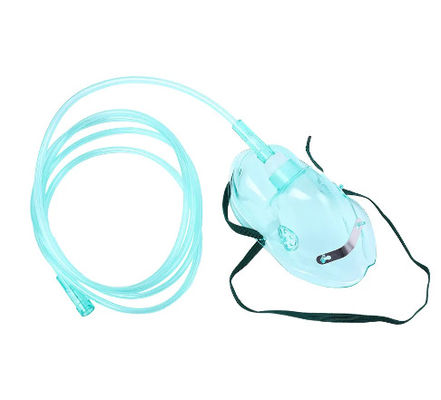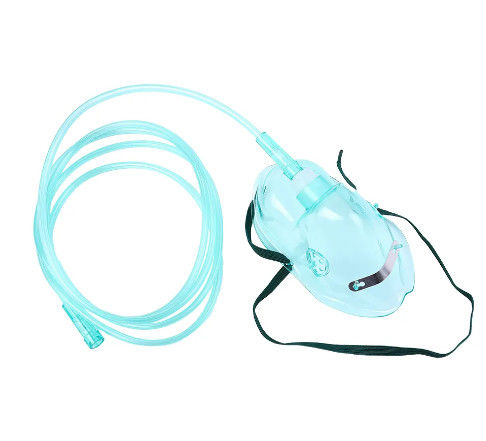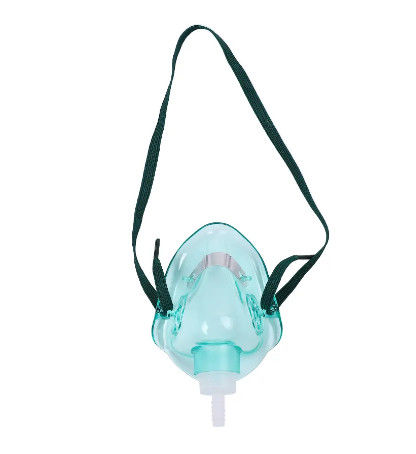
Reliable Soft Seal Oxygen Mask Providing Effective Oxygen Delivery Emergency Hospital Use
-
Highlight
Emergency Soft Seal Oxygen Mask
,Reliable Soft Seal Oxygen Mask
,Hospital Soft Seal Oxygen Mask
-
Place Of OriginChina
-
Disinfecting TypeEO
-
SizeS M L Xl
-
StockNo
-
Shelf Life3 Years
-
MaterialPVC/silicone
-
Quality CertificationCE
-
Instrument ClassificationClass I
-
PropertiesMedical Materials & Accessories
-
ApplicationClinic/hospital
-
PackingPE Bag
-
ShipmentBy Sea, Land, Air, Express
-
Place of OriginChina
-
Brand NameHenan
-
CertificationCE
-
Model NumberCustomized
-
Minimum Order Quantity5000pcs
-
PriceNegotiable
-
Packaging DetailsIndividual Packaging
-
Delivery Time24-30 days
-
Payment TermsL/C, T/T, Western Union
-
Supply Ability50000000pcs per month
Reliable Soft Seal Oxygen Mask Providing Effective Oxygen Delivery Emergency Hospital Use
Reliable soft-seal oxygen mask providing effective oxygen delivery for emergency and hospital use
The Oxygen Mask is a crucial medical tool designed to provide a controlled and precise supply of oxygen to patients in need of respiratory assistance. It consists of a mask that covers the nose and mouth, ensuring the delivery of oxygen-enriched air directly to the patient's airways.
![]()
Key Features:
Adjustable Fit: The mask is adjustable to ensure a comfortable and secure fit for patients of various ages and sizes.
Transparent Design: The transparent mask allows healthcare providers to monitor the patient's condition and response during oxygen therapy.
Elastic Straps: Equipped with elastic straps that can be easily adjusted to secure the mask in place.
Oxygen Tubing: Compatible with standard oxygen tubing for seamless connection to oxygen sources such as tanks or concentrators.
Soft and Comfortable: Constructed from soft, medical-grade materials to maximize patient comfort during prolonged use.
Available in Different Sizes: Comes in various sizes to cater to the needs of pediatric, adult, and geriatric patients.
![]()
| Product Name | Simple Oxygen Mask |
| Size | S/M/L/XL |
| Material | Medical Grade PVC |
| Style | Respiratory Care |
| Color | Transparent and Green, or Customized |
| Packing | PE Package |
| MOQ | 5000pcs |
![]()
When should an oxygen mask be used?
Oxygen masks are used in various clinical situations to deliver supplemental oxygen to patients. The decision to use an oxygen mask is typically based on the patient's clinical condition and the need to provide additional oxygen to support respiratory function. Here are common scenarios when an oxygen mask might be used:
1. Hypoxemia (Low Blood Oxygen Levels):
- Oxygen masks are frequently employed to treat patients with hypoxemia, where the oxygen levels in the blood are below normal. This can occur in conditions such as respiratory distress, pneumonia, acute respiratory failure, or during certain medical emergencies.
2. Chronic Respiratory Conditions:
- Patients with chronic respiratory conditions, such as chronic obstructive pulmonary disease (COPD), may require oxygen therapy during exacerbations or periods of increased respiratory distress.
3. Post-Surgical Recovery:
- After certain surgeries, especially those involving the respiratory or cardiovascular system, patients may receive oxygen therapy to support their recovery and ensure adequate oxygenation.
4. Cardiac Emergencies:
- In cardiac emergencies or heart-related conditions, patients may experience compromised oxygen delivery to tissues, necessitating the use of oxygen masks to improve oxygen levels.
5. Trauma and Critical Care:
- In cases of severe trauma, shock, or critical illness, patients may receive oxygen therapy through masks to maintain adequate oxygenation and support organ function.
6. Emergency Situations:
- Oxygen masks are often used in emergency medical situations, such as during transportation of critically ill patients, in the pre-hospital setting, or in the emergency room.
7. Neurological Disorders:
- Certain neurological disorders or conditions that affect respiratory drive may result in reduced oxygen levels, requiring the use of oxygen masks.
8. Pediatric Care:
- Pediatric patients with respiratory distress, pneumonia, or other respiratory conditions may receive oxygen therapy through appropriately sized pediatric oxygen masks.
9. Procedures and Tests:
- Oxygen masks may be used during certain medical procedures, diagnostic tests, or surgeries where additional oxygen support is deemed necessary.
![]()
How long can you wear an oxygen mask?
Replace your mask every 2 to 4 weeks. If you get a cold or the flu, change the mask when you're all better.
The duration for which an individual can wear an oxygen mask depends on the specific medical condition, the prescribed oxygen therapy plan, and the guidance provided by healthcare professionals. Oxygen therapy is typically administered based on the patient's oxygenation needs, and the duration can vary widely.
Which type of oxygen mask is best?
For patients who require sustained high-concentration oxygen therapy a non-rebreather mask is most suitable, providing the patient with valuable oxygen administration.




